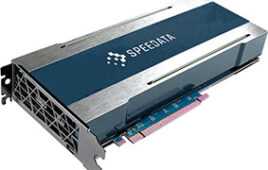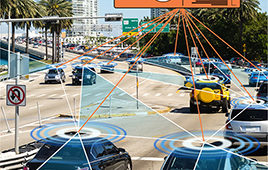Laboratory Information Management in a Broader Context
Laboratory Information Management in a Broader Context
A recent statement from Dr. Francine Berman, Director of the San Diego Supercomputing Center in Newsweek (June 12, 2006) has some interesting implications for LIMS. Dr. Berman writes, “…this country is being deluged with data, and its so disorganized that we can’t even access all of it, much less search it easily…We have to decide what information to keep, and how. Scientists, business leaders, and governments rely on this wealth of data to innovate—and students need it to learn.” |
| Figure 1: Typical user screen in Agilent’s OL ECM for conducting a database query for laboratory information. In this example, Varian Galaxie CDS results are queried to find all injections where a group of peaks exceed a group area. Click here to enlarge. |
It’s really no surprise that Laboratory Information Management Systems and LIMS users face these same challenges. Laboratory data can be notoriously disorganized and in need of centralization and controlled access. Laboratories have a pressing need to take control of their information by being able to safely secure it, reliably and quickly find it, and facilitate access to it among different users for various purposes.
We should not forget that the ultimate benefit behind taking control of our laboratory information is, as Dr. Berman writes, to “innovate”. LIMS is rooted on an intrinsic belief that the benefits of managing laboratory information more completely, rapidly and efficiently with a commercial LIMS will enable laboratory users to better understand the information. This understanding is much akin to Dr. Berman’s “innovation”.
Even LIMS with highly focused laboratory operations such as QA/QC require more than pure electronic sample and test tracking to enable thorough understanding of the information. The management of test results along with other electronic content is very much needed as well. Word documents, Excel spreadsheet summaries, and other electronic depictions of laboratory information are produced routinely along with laboratory results and these all comprise the difficulty in managing, storing and finding the data.
Agilent sees that the role of LIMS in a laboratory has now expanded to embrace additional capabilities using enterprise content management (ECM) technologies in addition to the more traditional LIMS capabilities. ECM provides ways to manage all this disparate electronic information and, among other things, to make it secure and yet readily retrievable.
For example, the new Agilent OL ECM provides data searching capability that extends to electronic results from different manufacturer’s data systems (such as those made by Agilent, Waters, PerkinElmer, Varian, ACD, Thermo Electron and many others) as well as electronic documents generated from Microsoft Word or Excel. It can search on electronic results that are rendered into the Adobe PDF format as well so that virtually any laboratory system that creates electronic information can have that information collected and managed and made searchable by the ECM.
 |
| Figure 2: Typical user screen for an extended laboratory search. In this example, a complex query to find all Word reports, Adobe PDF reports and chromatography injections with very specific search criteria (injections by a certain operator on a certain instrument) are conducted. Click here to enlarge. |
But we know that the simple capability to search on any piece of electronic information is insufficient for most lab users. Laboratory data searches must be extensive enough to relate to the information in a laboratory context, otherwise the searches lose their value. Searching and retrieving all injections collected on a Varian Galaxie data system on an Agilent 6890 GC where a group of compounds exceed some detected value as well as retrieving all Excel summaries reporting those results along with any Word reports mentioning that same compound of interest – these are the types of possible data searches that would enable lab users to make use of all the laboratory information and lead to better understanding. Such searches are more involved and more elaborate than simply finding one or two electronic results from a sample or lot of interest.
To achieve this level of laboratory data searching, Agilent has developed data extraction technologies that can extract laboratory data types from specific laboratory systems and create metadata for each data type. In this way, a wide range of different data can be made searchable in a laboratory context. By working with the specific manufacturer of the laboratory data, Agilent’s extraction technology allows manufacturer-specific searches in far more extensive ways.
For example, one of the many extractions Agilent has developed is for Varian Galaxie Chromatography Data System (CDS) files. This allows all Varian Galaxie CDS electronic results to be managed in Agilent OL Enterprise Content Management System and be made searchable in the manner described above. In constructing a search, users from their web clients can easily execute a highly focused search specific to the Varian Galaxie data. A typical user screen is shown on the accompanying figure 1.
It should be noted that users doing these searches are doing so on web clients that are completely external to the native Galaxie application that generated the data file; they are simply running the ECM system from their desktop and selecting a search for this data.
These searches however can become much more elaborate to search across different data types so that in addition to accessing specific laboratory results from a laboratory application like a CDS, a user can include in the search other electronic information that is managed in the ECM repository. In the example in figure 2, a database search is extended to not only search for specific CDS results, but also any Microsoft Word or Adobe PDF electronic files that also meet a particular set of conditions. By managing and organizing different types of electronic laboratory data, the information becomes more accessible by every LIMS user.
These unique and powerful searching capabilities provide better management of laboratory data. As we continue to develop LIMS technologies, we see that capabilities such as those discussed are addressing the exciting vision espoused by Dr. Berman – to better organize and easily access all laboratory information. This, we believe, will enable you to better understand the meaning of your laboratory information.




